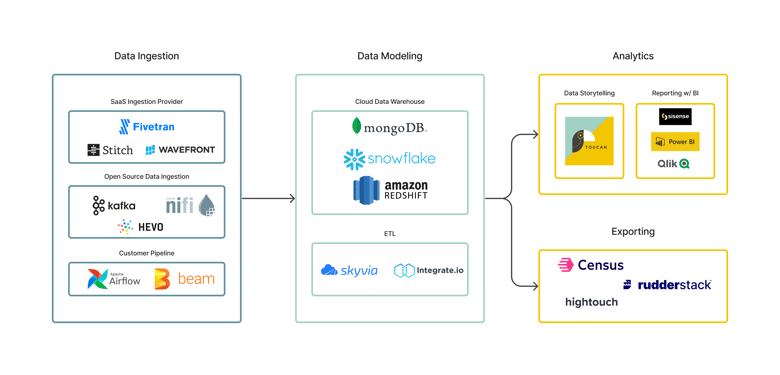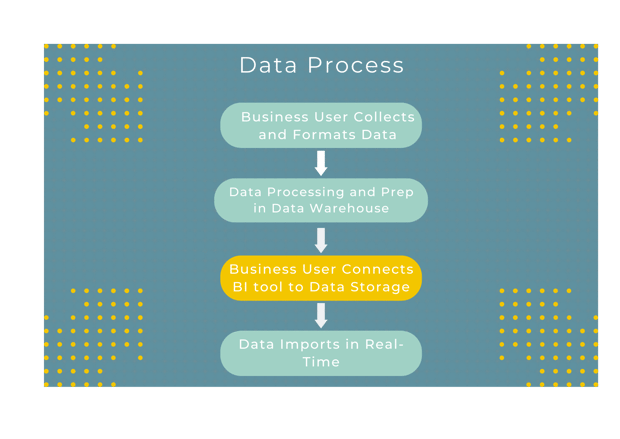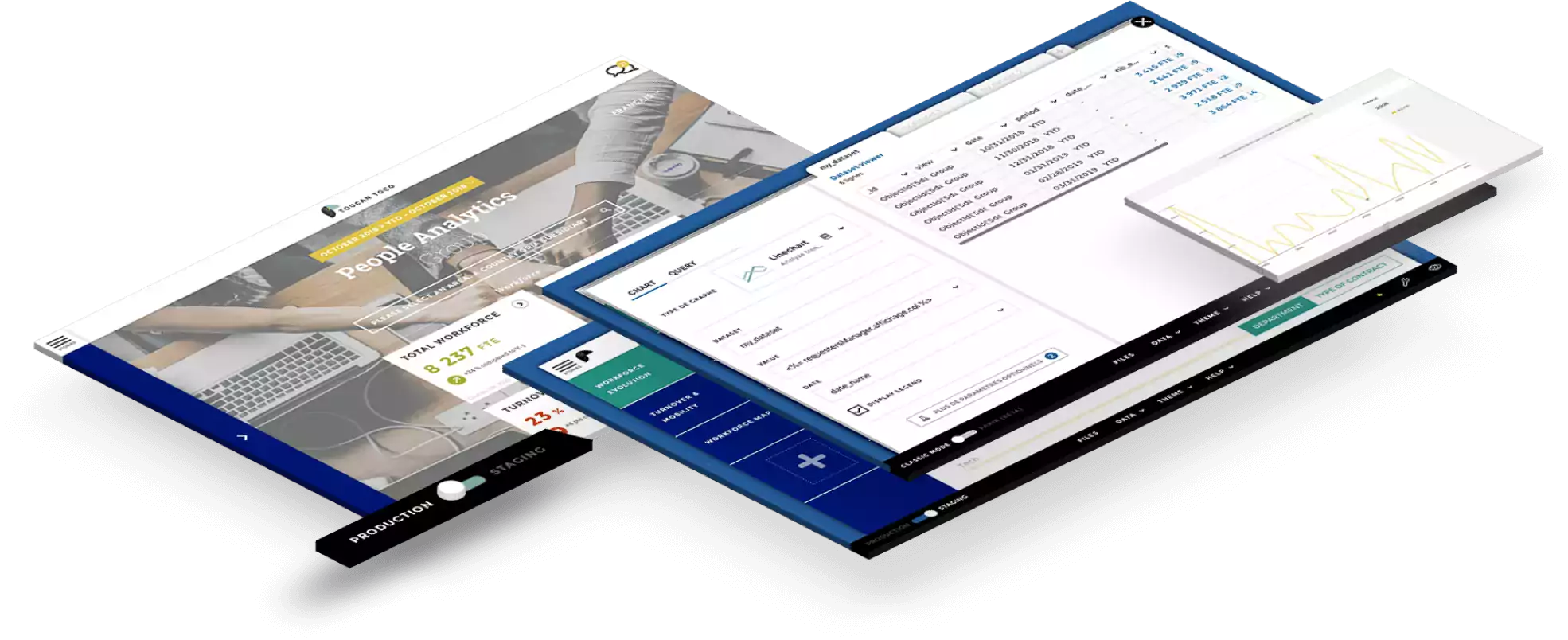Data storage has undergone a significant evolution. From physical servers to cloud-based data warehouses, innovators like Snowflake and AWS are expanding possibilities for companies interested in generating actionable insights.
With cloud-based data warehouses' capabilities, many SaaS companies are building applications to interface directly with them. Companies can transform their data warehouses into applications using Reverse ETL tools within seconds. From CRM data to financial KPIs, modern data warehouses can drastically simplify your tech stack and data processes.
But how exactly does this new data architecture help you and your business? And how can you take advantage of a data warehouse to quickly generate insights and reduce data headaches? We’ll dive into the answers to those questions and explain why data warehouses are the backbone of business applications.
Why Are Data Warehouses the New Backend?
There is no question that the modern data warehouse is an essential part of all business operations. With thousands of data points being collected daily across all departments, businesses needed an efficient and financially viable way to store their vast data sets.

For our purposes, we’ll focus more heavily on the usage of data warehouses and analytics applications like Toucan. Here are the perks of building a Toucan application directly over a data warehouse:
- Cost cutting: Because you don’t have to store all of your customer data, you’ll save on added costs and increase profit margins.
- Easier to use: Getting data into analytics solutions was a nightmare. Now, all it takes is a one-click connection to automate data imports. This makes onboarding a breeze and eliminates security concerns.
- Adoption: For decades, employees couldn’t or didn’t want to use data analytics solutions because of their complexity. Because data warehouses simplified the data analytics landscape, the everyday business user is expressing voluntary interest in using data to analyze performance.
So why are tools like Toucan gaining traction? It’s hard to imagine a decision-maker that doesn’t like efficiency and simplification wherever possible. Although data warehouses aren’t at the level where they can completely replace your backend, they’re getting very close to reaching that goal.
Using Data Warehouses to Generate Insights
Saying that data warehouses are the new backend doesn’t really help anyone unless we explain it. We’ll use a Toucan application as an example of feedback loops and processes with a data warehouse as a backend.
In the analytics/BI space, the data process has been notoriously difficult, clunky, and inefficient. Countless data teams have been employed across businesses in every industry imaginable, yielding lackluster results. Although many factors contribute to this failure, the most prominent are:
- Unnecessarily complex tech stacks to overcompensate for weaknesses
- Data teams as a bottleneck
- Inaccessibility for the non-technical user
Traditional BI and even many self-service BI tools suffered from these significant weaknesses, as evidenced by painfully low adoption rates. Augmented BI tools with data warehouses as a backend gets close to eliminating these hindrances. So here’s an example of how Toucan builds over a data warehouse like Snowflake to simplify data processes for all users, no matter the experience level.
The Process

Every data process begins with the collection. Whether it’s a point-of-sale system, Google Analytics, or Shopify, your data originates somewhere. You likely already have specific KPIs tailored to your customers, or internal goals that are clearly defined.
After data collection, you will need to extract this data and load it into a data warehouse like Snowflake. Many vendors offer software to automate these, allowing your application to update in real time.
You’ve collected, extracted, and imported your data into a data warehouse. This is where an older BI tool would start presenting challenges that can only be solved by data architects and experts. Contrary to these outdated solutions, Toucan applications take advantage of data warehouse capabilities and allow non-
s the opportunity to own their data.
Toucan’s one-click integration allows the non-technical to connect their data warehouse to the application directly, opening a gateway from your stored data to your dashboards. Any licensed user can then format and manipulate the data sets within the app without making changes in your data warehouse.
The best part is, anyone can execute these processes, regardless of their familiarity with analytics. Data analytics used to be a gatekept space that was unfriendly to the non-techni, which caused many to view investing in solutions as an option. With the formatting and preparation of data sets by modern data warehouses, creating a data visualization takes dramatically less time, experience, and frustration.
What’s Next?
The SaaS landscape is continuously evolving as technology catches up with the expectations of the business owner. As we look at the trends in the data analytics space, two things are clear:
- The cloud data warehouse will be crucial to every modern tech stack
- Because demand lies in efficient architecture, SaaS companies will shift their focus to building on top of data warehouses and phase out inefficient solutions.
What does this mean for you? If you’ve been reluctant to invest in data analytics because of the failed promises of traditional and self-service BI solutions, we don’t blame you. But the landscape has changed since the introduction of cloud technology and the innovation of data warehousing.
With a customer-facing analytics tool like Toucan, you can harness your stored data to unlock unlimited possibilities. Instead of employing a data team that creates bottlenecks, every employee can securely import data, create visualizations, and provide feedback. Zooming out, the big picture presents a much more inclusive and enticing proposition: your employees will finally use their analytics solution to increase performance, and the culture of your business will shift from instinctive to data-driven.





